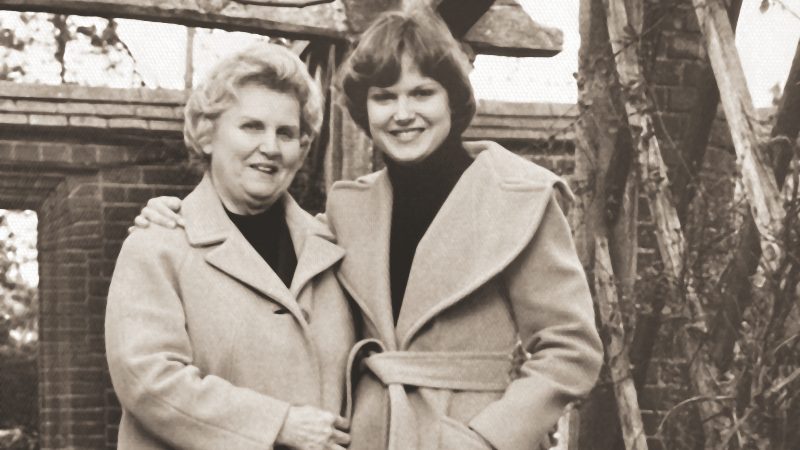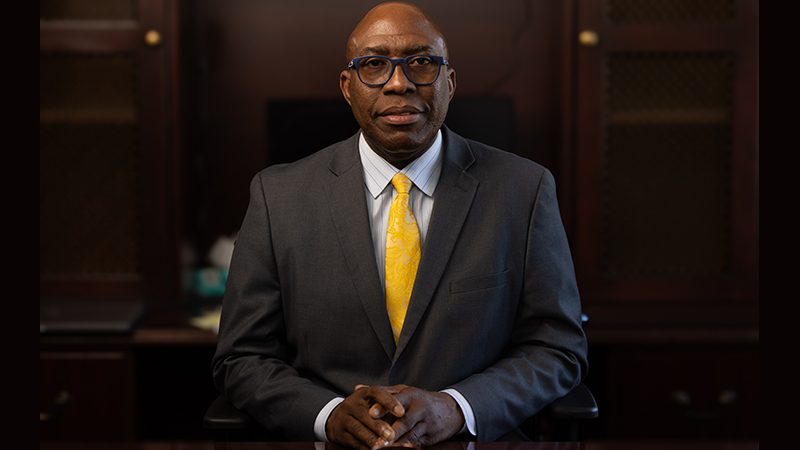The beginnings of Adventist work in Arizona are a little hazy. Certainly there were Adventists in Arizona by the 1880s—there is an entry in the Seventh-day Adventist Yearbook for 1884, but with no details. A.J. Potts indicates that the Phoenix church began in 1887 and that it was organized in 1890. In 1889, the California Conference took the responsibility for the largely un-entered territories of Utah and Arizona.
At the 1891 General Conference Session, R.A. Underwood reported, “Since the last General Conference, the California Conference has opened the work in Utah and Arizona. At Phoenix, Ariz., a church has been organized with eighteen members, and a good work started.”1 In 1895, Arizona was taken over as a General Conference mission, but in 1901 it was added to the territory of the newly created Pacific Union Conference.
One of the early pioneers, George States, wrote in the Review and Herald,The work in this territory moves slowly, and at times looks discouraging. About the first of October [1898] I began holding Bible readings in Phoenix. I continued this work, assisting some on the church building from that date until January 15. As a result, I had the joy of baptizing two souls, and seeing them unite with the Phoenix church.
January 15 I bade good-by to a large number of our brethren and sisters, and came to my new field at Flagstaff, nearly three hundred miles distant. As far as I know, there are none of our people within one hundred miles of us. It was quite a change to leave the warm climate of Phoenix and go to a place where the ground was covered with snow at an altitude of about seven thousand feet. I began at once to visit from house to house, leaving tracts, and taking orders for “Steps to Christ.” I have been over about two thirds of the place, have distributed several thousand pages of tracts, and expect to put at least seventy-five more copies of that valuable book into the homes of the people. I am giving some Bible readings, and a few seem interested. My wife and daughter are with me, and we hope soon to have others unite with us in our little Sabbath-school.2

The challenges of spreading the word are illustrated by some of States’ experiences. He went by bicycle through the Verde Valley, where he gave out tracts and visited people from previous meetings. While he was traveling through Peeples Valley with a tent and equipment, his wagon broke down, forcing long treks to find water. He had convinced a number of people of the truth, but when he returned 30 months later, only one family was left. There had been a drought and, due to the nature of the environment, the population was very transient. In addition, religious ideas seemed to many to be a luxury as they struggled to survive. A common saying among those who came west seeking gold was that they left their religion behind at the Missouri River.
Illustrating the diverse nature of the West, it’s fascinating to learn that the first people among the Hispanic community to become Adventists in the United States lived in Arizona.

In 1899, literature evangelists Walter Black and Charles Williams contacted a Methodist minister, Marcial Serna, from Tucson. Following a public debate, Serna accepted the Sabbath, and he then shared this truth with his members, many of whom also became Adventists. The first Spanish church was in Sanchez, Arizona, with 15 members attending. Marcial Serna himself became the first Hispanic pastor in the Adventist Church.
In 1901, R.M. Kilgore reported to the General Conference:In this mission field we have four organized churches, three of which have been developed since last General Conference. They are provided with a neat and comfortable meeting-house at each point (total value, $3,700), and so nearly paid for that they are practically out of debt. Two of these are Spanish-speaking churches, a few Americans being connected at Tucson. In the territory there are 111 members and 17 isolated Sabbath-keepers. Tithes paid to General Conference in 1900 were $459,—$4.13 per capita. Amount paid to the Foreign Mission Board, $59.90; book sales for six months, $107.50.3
It’s interesting to note that the initial Tucson church membership was made up of 13 Spanish speakers, nine English speakers (including four workers), and one Chinese speaker. The church at Solomonville was made up entirely of Spanish-speaking members. By the end of 1901, the mission had one ordained minister, three licensed ministers, two Bible instructors, one literature evangelist, and one church school teacher.
In 1901, Arizona became a mission of the Pacific Union Conference, newly established in a global reorganization of the Adventist Church’s administrative structure intended to allow local leadership greater say in directing the Church’s work. This change led directly to significant evangelistic progress in various areas, including the Pacific Southwest. General Conference president A.G. Daniells commended the new union conference for taking immediate action to send workers to Arizona to develop the Church’s program there:Perhaps no Conference in the States has done more thorough work in organizing than has the Pacific Union Conference. It has added to what was District 6, Arizona, Alaska, and Hawaii. The new administration began July 1, 1901. Without delay, laborers were sent to Arizona, Alaska, and Honolulu.4
The Arizona Conference was organized in 1902. It had four churches—Flagstaff, Phoenix, Solomonville, and Tucson—along with a company at Bisbee, altogether comprising 128 members, with one ordained and three licensed ministers. E.W. Webster, who had been superintendent of the mission, continued as president of the conference. The Arizona Conference was formally admitted to the Pacific Union Conference on March 18, 1904.

_____________________________
1. General Conference Daily Bulletin, vol. 4, March 8, 1891, p. 25.
2. George O. States, “Arizona,” Review and Herald, Feb. 14, 1899, p. 109.
3. General Conference Bulletin, vol. 4, April 4, 1901, p. 60.
4. A.G. Daniells, “A Brief Glance at the Work of Re-organization,” General Conference Bulletin, July 1, 1901, p. 514.
Pioneros adventistas en el oeste: Arizona - Los primeros años
Los comienzos de la obra adventista en Arizona son un poco confusos. Ciertamente, había adventistas en Arizona en la década de 1880: hay una entrada en el Seventh-day Adventist Yearbook de 1884, pero sin detalles. A. J. Potts indica que la iglesia de Phoenix comenzó en 1887 y que se organizó en 1890. En 1889, la California Conference asumió la responsabilidad de los territorios de Utah y Arizona, en gran parte sin miembros de iglesia.
En la Sesión de la Conferencia General de 1891, R. A. Underwood informó: «Desde la última Conferencia General, la California Conference ha iniciado obra en Utah y Arizona. En Phoenix, Arizona, se ha organizado una iglesia con dieciocho miembros, y se ha iniciado una buena obra».1 En 1895, Arizona fue tomada como una misión de la Conferencia General, pero en 1901 fue agregada al territorio de la recién creada Pacific Union Conference.
Uno de los primeros pioneros, George States, escribió en la Review and Herald,El trabajo en este territorio avanza lentamente y a veces parece desalentador. Alrededor del primero de octubre [de 1898] comencé a dar estudios bíblicos en Phoenix. Continué esa obra, ayudando a algunos en la construcción de la iglesia desde esa fecha hasta el 15 de enero. Como resultado, tuve el gozo de bautizar a dos almas y verlas unirse a la iglesia de Phoenix.
El 15 de enero me despedí de un gran número de nuestros hermanos y llegué a mi nuevo campo en Flagstaff, a casi trescientas millas de distancia. Que yo sepa, no hay ninguno de los nuestros en un radio de cien millas. Fue todo un cambio dejar el clima cálido de Phoenix e ir a un lugar donde el suelo estaba cubierto de nieve a una altitud de unos siete mil pies. De inmediato comencé a visitar de casa en casa, dejando tratados y tomando órdenes para «El camino a Cristo». He recorrido alrededor de dos tercios del lugar, he distribuido varios miles de páginas de tratados, y espero poner por lo menos setenta y cinco ejemplares más de ese valioso libro en los hogares. Estoy dando algunos estudios bíblicos y algunos parecen interesados. Mi esposa y mi hija están conmigo, y esperamos que pronto otros se unan a nosotros en nuestra pequeña escuela sabática.2

Las dificultades que plantea la difusión de la Palabra se ilustran en algunas de las experiencias del Estado. Recorrió en bicicleta el Valle Verde, donde repartió folletos y visitó a personas de reuniones anteriores. Mientras viajaba a través de Peeples Valley con una carpa y equipo, su carreta se descompuso, que lo obligó a largas caminatas para encontrar agua. Había convencido a varias personas al mensaje adventista pero cuando regresó 30 meses después, solo quedaba una familia. Había habido una sequía y, debido a la naturaleza del entorno, la población era muy transitoria. Además, las ideas religiosas les parecían un lujo mientras luchaban por sobrevivir. Un dicho común entre los que llegaron al oeste en busca de oro era que dejaron su religión en el río Missouri.
Para ilustrar la naturaleza diversa del oeste, es fascinante saber que las primeras personas de la comunidad hispana que se convirtieron en adventistas en los Estados Unidos vivieron en Arizona.

En 1899, los colportores Walter Black y Charles Williams se pusieron en contacto con un ministro metodista, Marcial Serna, de Tucson. Después de un debate público, Serna aceptó el sábado, y después compartió esa verdad con sus miembros, muchos de los cuales también se convirtieron al adventismo. La primera iglesia hispana fue en Sánchez, Arizona, con 15 miembros. El mismo Marcial Serna se convirtió en el primer pastor hispano de la Iglesia Adventista.
En 1901, R. M. Kilgore informó a la Conferencia General:En este campo misionero tenemos cuatro iglesias organizadas, tres de las cuales se han desarrollado desde la última Conferencia General. Se les proporciona una casa de reuniones limpia y cómoda en cada punto (valor total, $ 3,700), y están tan cerca de pagarla que prácticamente están libres de deudas. Dos son iglesias de habla hispana, y algunos estadounidenses están conectados en Tucson. En el territorio hay 111 miembros y 17 observadores aislados del sábado. Los diezmos pagados a la Conferencia General en 1900 fueron $459, es decir, $4.13 per cápita. Cantidad pagada a la Junta de Misiones Extranjeras, $59.90; Venta de libros por seis meses, $107.50.3
Es interesante notar que la membresía inicial de la iglesia de Tucson estaba compuesta por 13 hispanos, nueve anglos (incluidos cuatro obreros) y un chino. La iglesia de Solomonville estaba compuesta en su totalidad por miembros de habla hispana. A finales de 1901, la misión tenía un ministro ordenado, tres ministros con licencia, dos obreros bíblicos, un colportor y un maestro de escuela de iglesia.
En 1901, Arizona se convirtió en una misión de la Pacific Union Conference, recientemente establecida en una reorganización global de la estructura administrativa de la Iglesia Adventista con la intención de permitir que el liderazgo local tuviese más voz en la dirección de la obra. Ese cambio condujo directamente a un progreso evangelístico significativo en varias áreas, incluyendo el suroeste del Pacífico. El presidente de la Conferencia General, A. G. Daniells, elogió a la nueva unión por tomar medidas inmediatas para enviar obreros a Arizona para desarrollar el programa de la Iglesia:Tal vez ninguna Conferencia de los Estados Unidos haya realizado una labor de organización más minuciosa que la Pacific Union Conference. Se ha sumado a lo que fue el Distrito 6, Arizona, Alaska y Hawaii. La nueva administración comenzó el 1 de julio de 1901. Sin demora, obreros fueron enviados a Arizona, Alaska y Honolulu.4
La Arizona Conference fue organizada en 1902. Tenía cuatro iglesias: Flagstaff, Phoenix, Solomonville y Tucson, con una compañía en Bisbee, que comprendía en total 128 miembros, con un ministro ordenado y tres con licencia. E. W. Webster, que había sido superintendente de la misión, continuó como presidente de la conferencia. La Arizona Conference fue admitida formalmente en la Pacific Union Conference el 18 de marzo de 1904.

_____________________________
1 General Conference Daily Bulletin, vol. 4, March 8, 1891, p. 25.
2 George O. States, “Arizona,” Review and Herald, Feb. 14, 1899, p. 109.
3 General Conference Bulletin, vol. 4, April 4, 1901, p. 60.
4 A.G. Daniells, “A Brief Glance at the Work of Re-organization,” General Conference Bulletin, July 1, 1901, p. 514.






